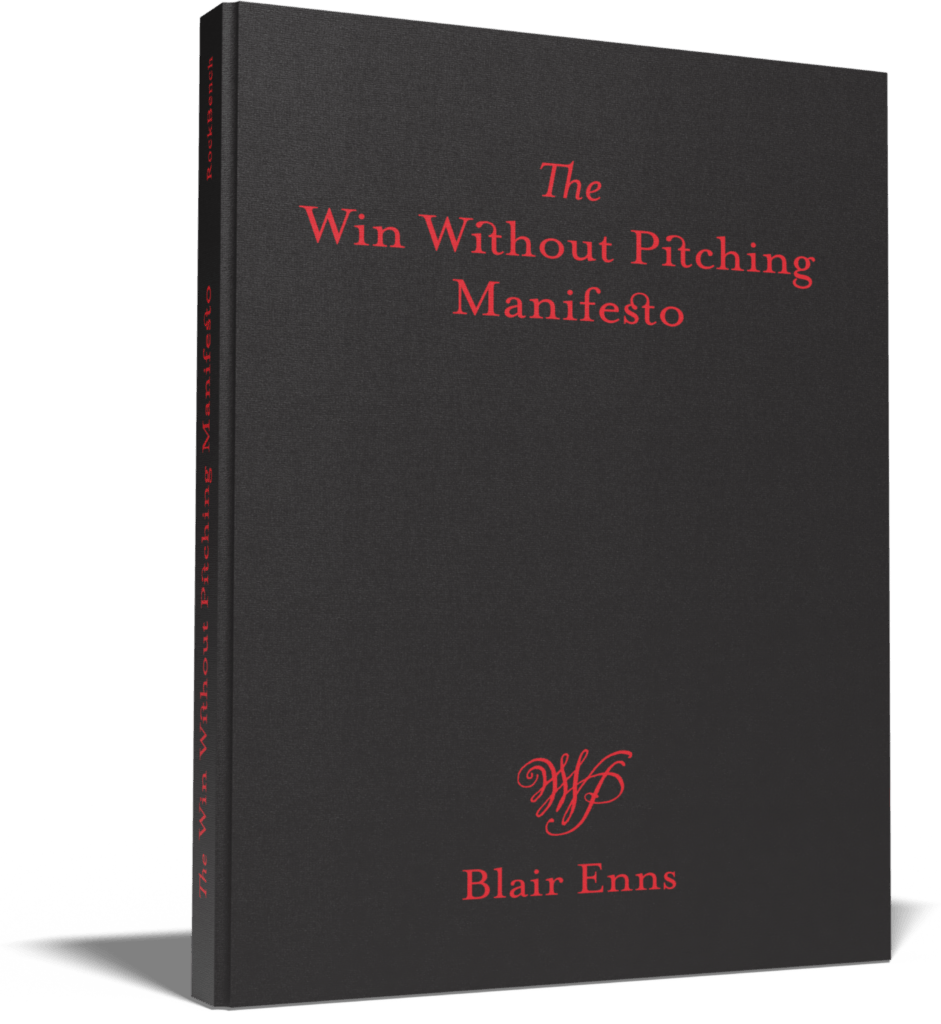Two of my favorite things collided this week when author and blogger Tim Ferriss put out a call for a design contest on 99designs.com to design the cover for his new book. It was picked up on Twitter by free pitching watchdogs No!Spec and @specwatch and the debate was on. The comments, for and against, continue to pile up on Tim’s blog. Here are some of my slightly random thoughts on the global issue of free pitching.
1. Free pitching is never going away. You cannot legislate away the seller’s right to give his work away for free. The free pitch will always be an avenue for the student, the lesser experienced, the lesser talented, the fan or anyone who is otherwise a long shot to win the business.
2. Free pitching is not the best way to chose a design firm. The process keeps designer from client and forces him to make significant guesses at the requisite diagnosis and prescription that precedes design, and it eliminates real collaboration. It trades a likelihood of a positive outcome (x) for a greater number of far lower likelihoods (5(.2x)). It feels like risk dilution but is not.
3. In agreeing to free pitch, the designer gives up far more than his ideas; he sacrifices the ability to do his best work.
4. The thinking that brings value to design is not something that is easily delivered in a free pitch. Getting to it requires an investment on the part of the client, and a willingness to let the consultant lead the engagement. Clients simply cannot invest with two, three or twelve firms at once, and if they haven’t paid fairly, they’re not really committed to the process.
5. Being a good designer is not enough to ensure business success. The most effective designers are also effective consultants. What separates them from the rest is the thinking that precedes and wraps the design, their ability to lead the engagement, to mitigate risk for the client and to consistently lead the client to high-quality outcomes. Better clients pay a significant premium for this and always will.
6. Design uncoupled from these advisory services is a product that is approaching commodity status. Sometimes people just need something designed. Quickly, cheaply, nicely. In a market overflowing with sellers, buyers will get this need met. 99designs, Crowdspring and the other spec sites are tools of efficiency in this market. They are not inherently evil or benevolent. They exist to meet a need and they help labor to go where it wants – where it’s cheapest – with all the creative and destructive implications.
7. There is no mass defection of good clients with decent budgets who value design to these online competitions. There never will be, for the more meaningful engagements.
8. When a client requests spec creative, he does so knowing that the very best likely will not participate.
9. To clarify, online design contests are not crowdsourcing. There is no group participation or distributed problem solving, only electronically-enabled competition.
10. From time to time there are egregious examples of exploitation on the free pitching front. Tools of social media (e.g.: @specwatch on Twitter) are helping to keep people honest. These tools have potential, but let’s remember to be hard on the issues and soft on the people. Nobody is being forced to do anything. It’s okay to say no.
 11. The Win Without Pitching Manifesto offers twelve proclamations, all of which are about what the designer (agency) can do to beat free pitching. The entire thesis is rooted in the fact that free pitching is primarily an agency problem, rather than a client problem. The root of it can be summed up in one word: oversupply.
11. The Win Without Pitching Manifesto offers twelve proclamations, all of which are about what the designer (agency) can do to beat free pitching. The entire thesis is rooted in the fact that free pitching is primarily an agency problem, rather than a client problem. The root of it can be summed up in one word: oversupply.
12. Clients do not need to be saved from themselves by designers on the free pitching issue. Clients might chose to seek better ways to hire a design firm, and designers might seek to better understand how their decisions contribute to the free pitching problem. Here, the trade associations of procurement and design can do more to help.
13. Design associations around the world have tried to offer guidelines to clients on the proper way to hire a design firm, when they should be offering guidelines to designers on how to differentiate themselves and reclaim some of the power in the buy-sell relationship. Almost universally, they are facing the wrong way on this issue.
14. Procurement professionals should be discouraged by the professional associations that accredit them from asking any vendor for free products or services as a means of hiring evaluation. The procurement profession can have a positive role to play instead of furthering the commoditization of the product they are buying and driving unnecessary costs into the process. They possess the power to lead clients and forge progress on this issue.
15. While substantial progress is possible, there is no happy ending for everybody. The wheel of creative destruction churns. Market forces will prevail. Design firms will be pushed out of business. Designers will be forced into other careers. Clients will run design contents that get hundreds of entries only to think, “none of these are any good,” when it is the process itself that is flawed. Free pitching will persist. Sometimes it will result in a happy marriage, sometimes it won’t. The smarter, better firms will rise above and let the others squabble while they find a way to win without pitching. At a certain altitude you no longer hear the noise; the argument is no longer relevant to you. If you can win without pitching while your competition pitches, is the free pitching problem really a problem after all?
16. Differentiate or Die. This was never just a slogan, people. This is the only marketing advice that ever really mattered. Designers are not immune to the principles of marketing or supply and demand economics.
~
